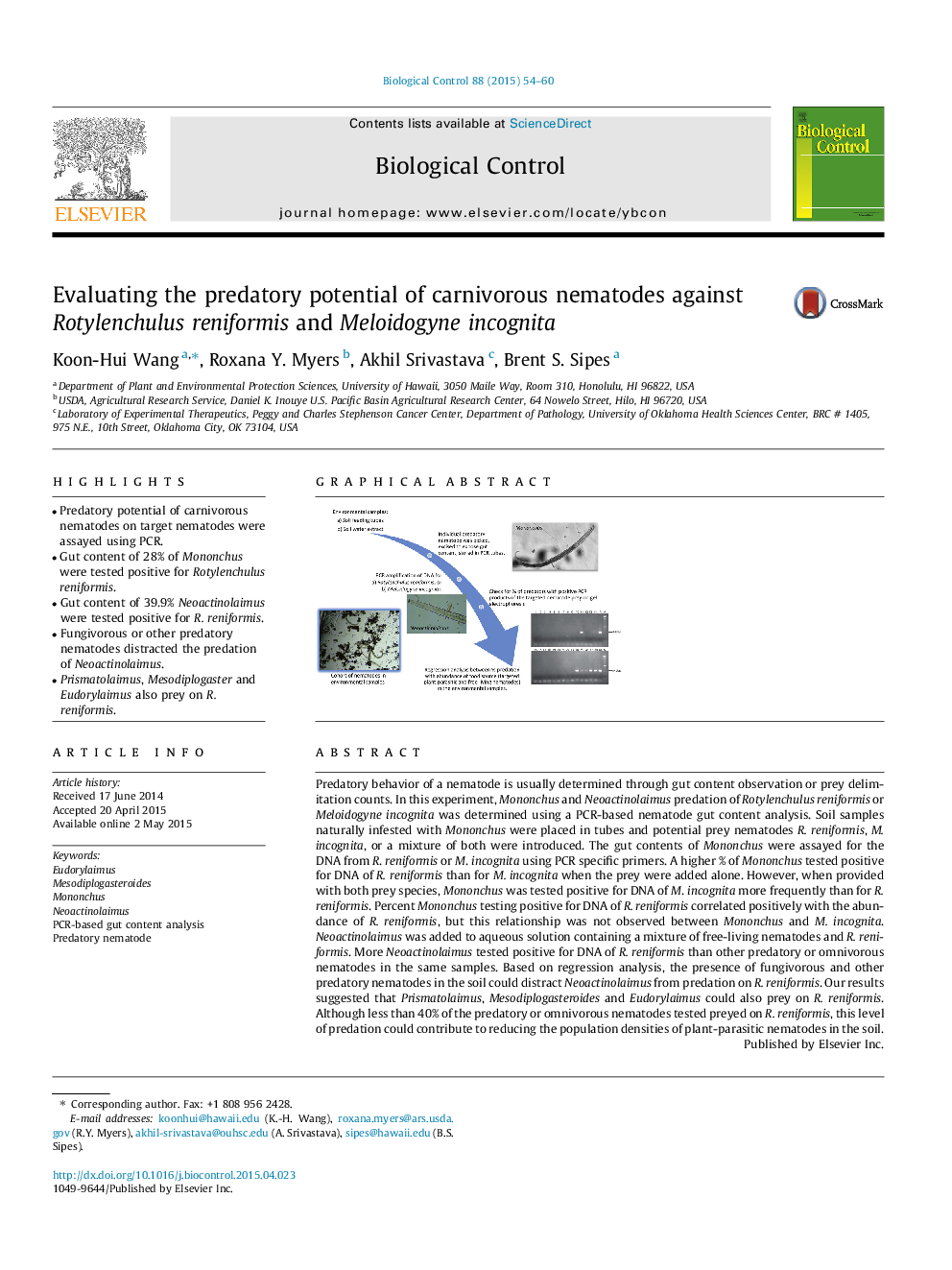| Article ID | Journal | Published Year | Pages | File Type |
|---|---|---|---|---|
| 4503784 | Biological Control | 2015 | 7 Pages |
•Predatory potential of carnivorous nematodes on target nematodes were assayed using PCR.•Gut content of 28% of Mononchus were tested positive for Rotylenchulus reniformis.•Gut content of 39.9% Neoactinolaimus were tested positive for R. reniformis.•Fungivorous or other predatory nematodes distracted the predation of Neoactinolaimus.•Prismatolaimus, Mesodiplogaster and Eudorylaimus also prey on R. reniformis.
Predatory behavior of a nematode is usually determined through gut content observation or prey delimitation counts. In this experiment, Mononchus and Neoactinolaimus predation of Rotylenchulus reniformis or Meloidogyne incognita was determined using a PCR-based nematode gut content analysis. Soil samples naturally infested with Mononchus were placed in tubes and potential prey nematodes R. reniformis, M. incognita, or a mixture of both were introduced. The gut contents of Mononchus were assayed for the DNA from R. reniformis or M. incognita using PCR specific primers. A higher % of Mononchus tested positive for DNA of R. reniformis than for M. incognita when the prey were added alone. However, when provided with both prey species, Mononchus was tested positive for DNA of M. incognita more frequently than for R. reniformis. Percent Mononchus testing positive for DNA of R. reniformis correlated positively with the abundance of R. reniformis, but this relationship was not observed between Mononchus and M. incognita. Neoactinolaimus was added to aqueous solution containing a mixture of free-living nematodes and R. reniformis. More Neoactinolaimus tested positive for DNA of R. reniformis than other predatory or omnivorous nematodes in the same samples. Based on regression analysis, the presence of fungivorous and other predatory nematodes in the soil could distract Neoactinolaimus from predation on R. reniformis. Our results suggested that Prismatolaimus, Mesodiplogasteroides and Eudorylaimus could also prey on R. reniformis. Although less than 40% of the predatory or omnivorous nematodes tested preyed on R. reniformis, this level of predation could contribute to reducing the population densities of plant-parasitic nematodes in the soil.
Graphical abstractFigure optionsDownload full-size imageDownload as PowerPoint slide
